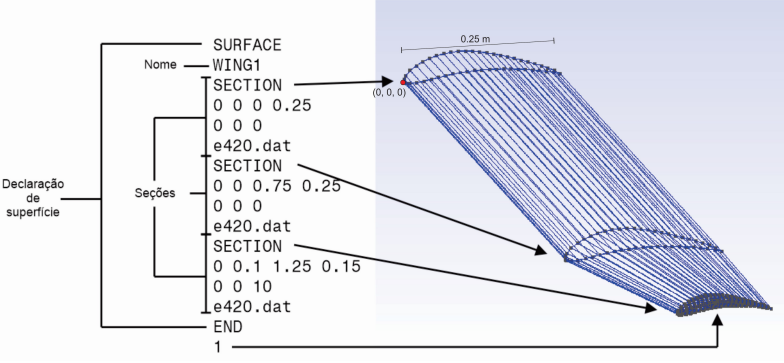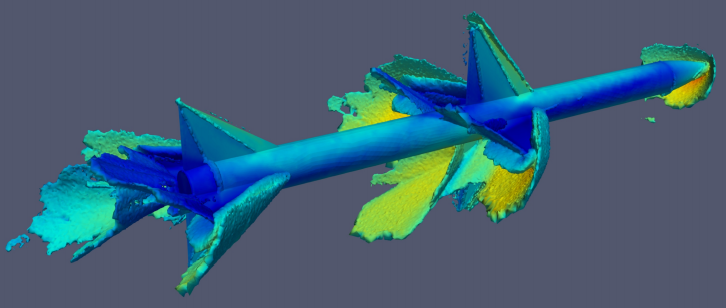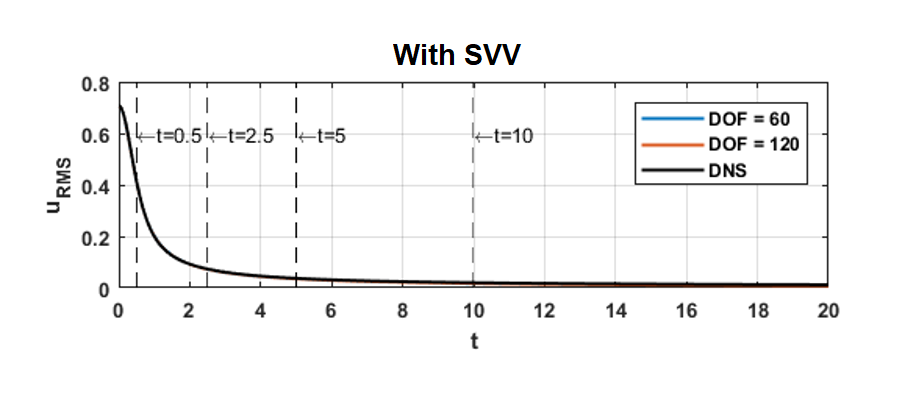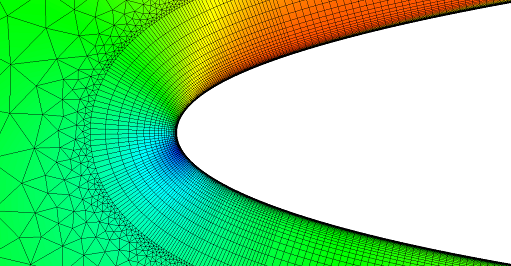top of page

LASCA
Laboratório Avançado de Simulação
Computacional em Aerodinâmica


Highlighted research and applications...
Aug/2020 @ Automated mesh generation for wings and missiles

1

2

8

1
1/8
Description: This is the outcome of a scientific initiation project focused on the development of automated mesh generation techniques for 3D simulations of flows around arbitrary geometries of wings and missiles/rockets, benefiting from a previous work on automated mesh generation for (2D) airfoils. The methodology relies on Matlab® routines that generate Gmsh® scripts from which the meshes are actually created, without additional user input. In the case of wings, the geometry is specified through user-given airfoil sections along the wing's semi-span, these sections being interpolated to generate the final geometry, which can be arbitrarily complex. Generation of prismatic layers over wing surfaces is also allowed for in viscous simulations, while a simple wing-tip rounding (closure) algorithm is also available. For missile/rocket mesh generation, the geometry is specified as separate sections such as the nose, body and tail fins/wings. Different types of geometry are supported by a variety of nose-cone shapes, conical body transitions, and aerodynamic surfaces. Also, a simple mesh refinement algorithm based on pressure gradients was developed to aid with shock capturing. Test simulations have been conducted with software SU2®, which succesfully demonstrated the capabilities of the proposed approach. Complex geometries have been meshed with minimal effort from the user, significantly reducing the time spent in mesh generation. Future works shall focus on improving even more the quality of the prismatic layers for the simulation of viscous flows.
For details, contact: augusto.zanca@gmail.com; moura@ita.br; andref@ita.br
Dec/2019 @ Stabilized under-resolved nonlinear simulations via spectral/hp CG methods

1 - energy

2 - no svv

3 - yes svv

1 - energy
1/3
Description: This study adresses accuracy and stability of spectral/hp continuous Galerkin (CG) schemes for under-resolved nonlinear problems. The theme's relevance lies in the fact that, in recent years, CG has been used in LES-type computations of turbulent flows without explicit turbulence modelling. Within this scenario, an adequate balance between numerical dissipation and spectral resolution power (i.e. eddy-resolving capability) is very important. A modified Burgers' equation is proposed, in which discontinuities are prevented while large wavenumbers remain significantly energised. This model problem is analysed using both fully-resolved and under-resolved simulations. In the first, physical parameters, Reynolds number and an artificial pressure term are analysed as to their role in the solution dynamics. In the second, a modern spectral vanishing viscosity (SVV) operator is employed for stability. Different polynomial orders are considered in a same-DOF setting. While under-resolved simulations without SVV are typically less accurate and less stable, sensible choices of polynomial orders and SVV parameters are shown to provide accurate resolution of the inertial range at competitive costs.
For details, contact: lucasdantasf29@gmail.com; moura@ita.br
May/2019 @ Automated mesh generation for airfoils

a

b

e

a
1/5
Description: This is the outcome of a scientific initiation project aimed at automating the process of mesh generation for CFD. Two main algorithms have been developed in the context of external flow simulations past airfoils. These are implemented in Matlab®, which then generates Gmsh® scripts for the user to visualize and finish up the process in Gmsh®, defining boundary conditions, etc. The first of the two algorithms optimally distributes a user-prescribed number of nodes along the airfoil surface, where the density (clustering) of nodes is made proportional to the local surface curvature. The second algorithm, used mostly for RANS-type computations, builds a structured layer of rectangles over the airfoil's surface, with the layer's thickness following the boundary layer growth. An available option is to use the boundary layer thickness as calculated from light codes such as XFOIL, whose execution and integration is made automatic into the Matlab framework. An important part of this last algorithm is the prevention of intersections between structured layers of different airfoil elements, say between the layers of the main element and its flap. This is done by reducing the prescribed thickness of adjacent layers only in regions where they would otherwise intersect, keeping a "free corridor" of given width in between the layers in this region. This corridor is subsequently filled with unstructured mesh elements in Gmsh®, as happens in the remainder of the domain. Such strategies are all developed in a way that is extensible to three-dimensional and more complex geometries (for future works).
For details, contact: benson@ita.br; moura@ita.br
bottom of page